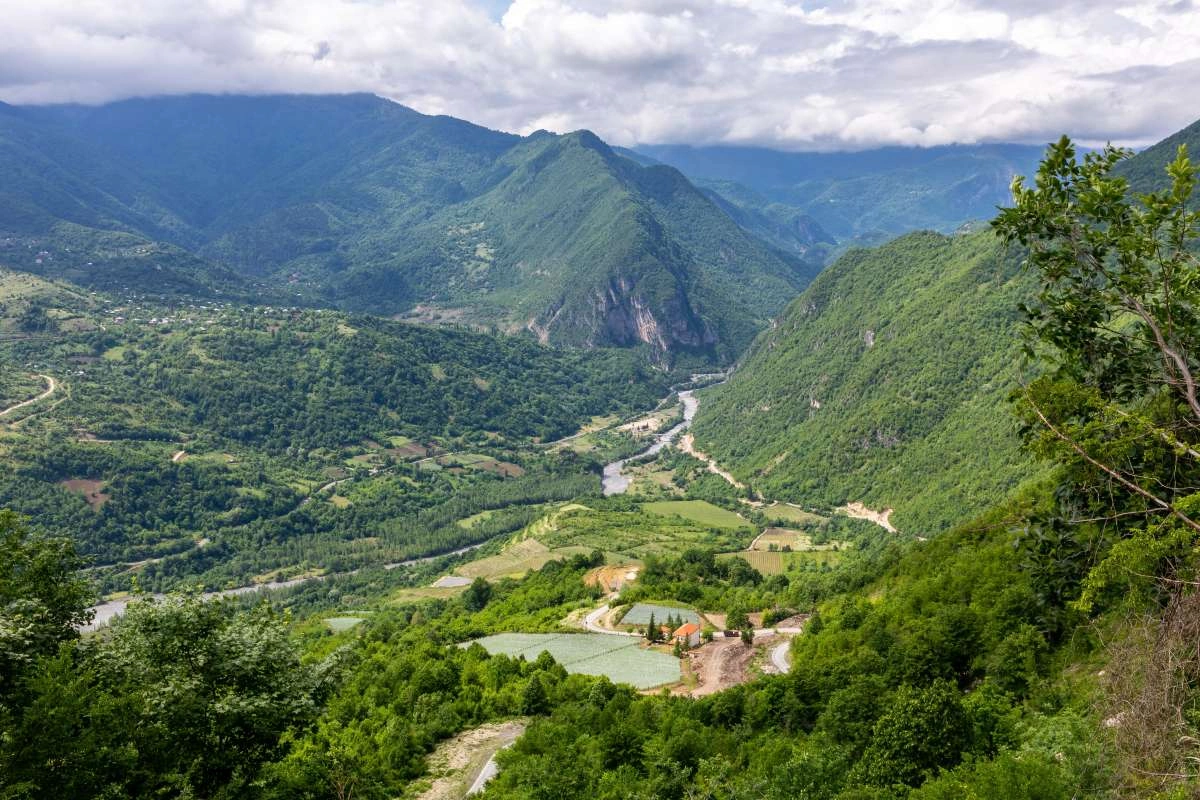
Global Environmentalism as a Peacemaker in the South Caucasus
(Eurasianet) There is no shortage of conflicts in and around the Caucasus.
But for nine days last summer, beneath the frozen peaks in Racha and Svaneti, I saw what peace looks like.
Lopping off branches and plowing the earth, I was part of a team of international volunteers building the Transcaucasian Trail (TCT) as we opened old herding paths for trekking. The TCT, on a larger scale, is erecting literal and figurative bridges between local communities, national governments and international partners.
My team of eight included Georgians and Azerbaijanis. Other TCT programs bring Azerbaijanis and Armenians together. In contrast to the deadlock in and around Karabakh, South Ossetia and Abkhazia, we found that cooperation on conservation is not only possible but expanding.
Both a facilitator and service provider, the TCT reveals how people in the South Caucasus are working toward a more cooperative, peaceful future. By tying global collaboration to scientific conservation methods and participatory development, the TCT can serve as a model for further diplomacy. The organization works with international partners, civil society and national governments while making natural resource preservation happen.
Eventually, these agreements can form patterns and principles for peace. A 2021 study by the UK-based Conflict and Environment Observatory warned that stability in the region will require enduring commitments to shared natural resource management, especially regarding water use between Armenia and Azerbaijan. Environmental collaboration can improve prospects for actionable, grounded progress in security negotiations and commitments.
Home to nine of 11 internationally classified climatic zones, the Caucasus’s unique eco-regions do not observe the boundaries of Georgia, Armenia and Azerbaijan. The Organization for Security and Cooperation in Europe has called pressures like climate change “threat multipliers” and warns that environmental hotspots can destabilize all of the South Caucasus.
While Georgia, Armenia and Azerbaijan share environmental challenges – including deforestation, land degradation, resource exploitation and pollution – coordination between national governments remains limited. Green activism in the region dates back to the late Soviet period, yet many environmentalists have only “fragmented information on the situation regarding their neighbors,” researchers from the three countries wrote in a joint article for the Journal of Conflict Transformation in 2020.
Through patient diplomacy, the TCT is building a network of hiking trails across the South Caucasus. Begun in 2015, the trail will consist of two intersecting legs in a giant ‘X’ pattern: from Armenia to Georgia and from Georgia to Azerbaijan.
Even after the Second Karabakh War in 2020, the organization kept working to support peace. In 2021, the TCT announced that it was expanding its trail-building to include Azerbaijan, becoming one of the few organizations that regularly connects people from all three countries.
The Transcaucasian Trail and its partner, the Caucasus Nature Fund, are incorporated in the United States and Germany, respectively, but the nonprofits have avoided pitfalls that can impede the long-term sustainability of development projects.
The Caucasus Nature Fund supports 50 percent of operating expenses for its network of parks, soliciting long-term engagement from host governments, which monitor and plan parklands with local communities. Similarly, the TCT has worked with local residents from its initial scouting to the launch of a trail passport to connect trekkers with local businesses.
This kind of partnership, while challenging long-held power dynamics in development and diplomacy, is critical to achieving the goals set out at the United Nations Biodiversity Conference in December, which adopted a global biodiversity framework for the first time. Nearly 200 countries pledged to protect 30 percent of our planet’s land and sea by 2030.
The same writers in the Journal of Conflict Transformation – Jeyhun Veliyev, Sofya Manukyan and Tsira Gvasalia – examined how shared concerns about biodiversity could help peacebuilding. Meetings “between people with more narrow specializations in conservation,” they wrote, can be more productive at creating relationships and avoiding political tensions.
They take, as an example, efforts to protect the endangered Caucasian leopard (a.k.a. the Persian leopard), arguing that a “partnership between Armenia and Azerbaijan coordinated bilaterally or by third parties” could build alternative structures for public diplomacy, encouraging peace for people and animals.
Further, because environmental movements appeal to a shared natural heritage and commonality, they offer a chance to advocate for the involvement of non-recognized territories – such as Abkhazia, South Ossetia and Karabakh – in conservation programs and implementation.
This year, I am planning a return to Svaneti as a volunteer, hiker and member of this transnational community. Waking up before sunrise and trekking out to worksites, crews put aside differences and come together for the region’s shared legacy. These unexpected moments of solidarity – whether around a campfire or mountaintop – underscore how environmentalism can and will cross political borders, creating new opportunities.
Share on social media
